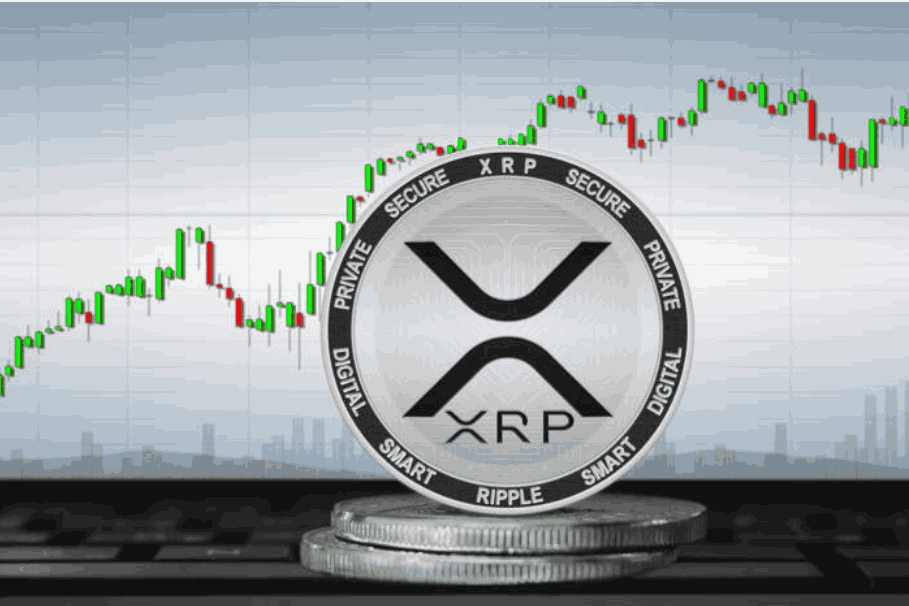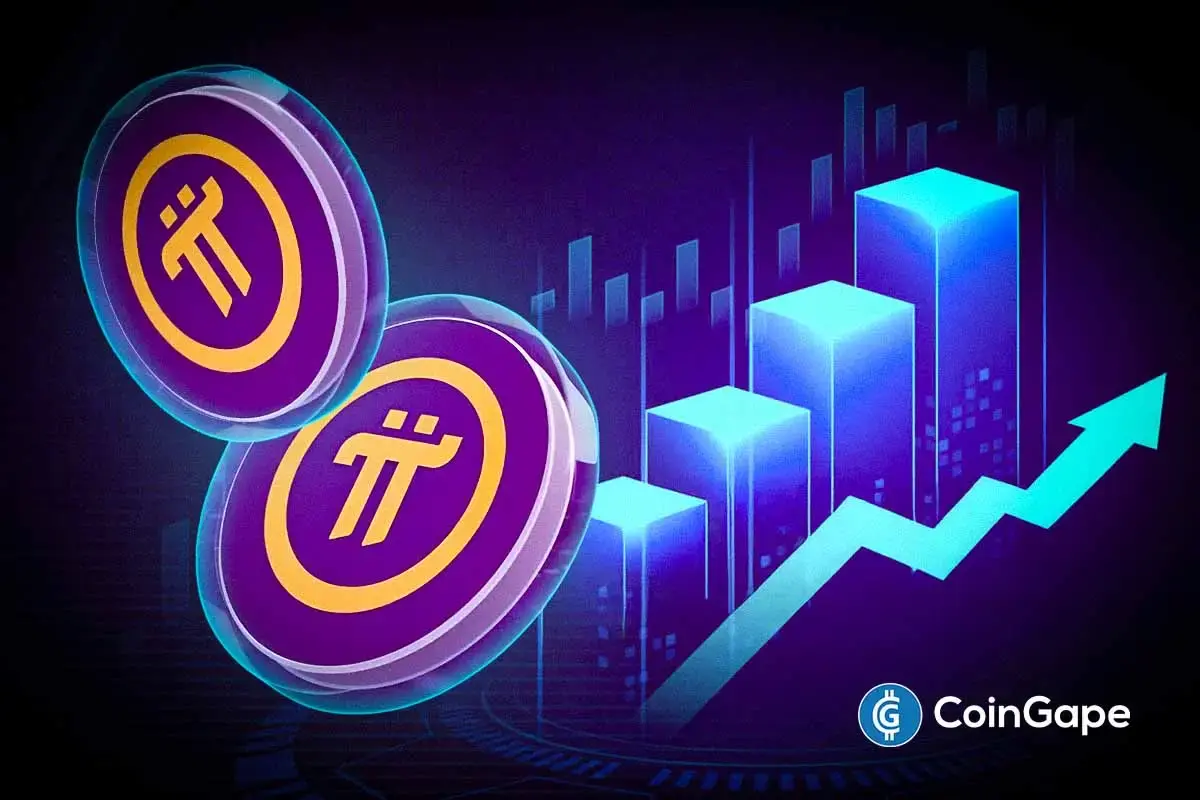Altcoin
Is a $1,000 XRP Price Possible? Here’s What Experts Say

The XRP community has gone into a frenzy about a possible XRP price following a tweet by the digital currency platform Uphold that hinted at nothing but “XRP just hit $1,000. What are you tweeting?”
This unsurprisingly drove excitement but also raised eyebrows in skeptical crypto circles where such predictions do not go without heated debate.
XRP Price Surge: Can it Hit $1,000 as Predicted?
At the time of writing, XRP price was jumping above the $0.60 level. That said, the digital asset seems to display strong momentum as it stands 3.6% in gains week-over-week and up 11% month-over-month. Still, XRP remains 84% off of its ATH and lags most major crypto assets year to date.
However, it all began last year, in November when one of the most popular financial blogs, WallStreetBulls, chipped in with its own audacious prediction.
It confidently said:
“XRP reaching $1,000 was no more an unreachable dream and it could well happen within a few months if not weeks. #XRP #CryptoRevolution.”
Also, a recent commentary from Crypto Tank, a noted personality in the XRP community, once again brought to light the probability of XRP going up to $1,000. Crypto Tank said critics may undervalue the significant utility of XRP, especially in the global financial systems.
Skeptics Call Out “Gaslighting” as Price Prediction Sparks Debate
Clearly, not everyone is as confident about the potential of XRP.
Vocal skeptic JO rebutted:
“You really think it will jump from a $33 billion to a $100 trillion market cap overnight? That’s 20 times Apple’s value and 90 times Bitcoin’s. Stop the gaslighting! Let’s get it to $1, or maybe $5-$6.”
Therein lies perhaps the greatest doubting factor in the crypto space: how did such a great leap in XRP price even occur? This would indicate that the market cap surges past $100 trillion to $1,000, which would easily overshoot some of the world’s biggest companies and leading cryptocurrencies.
Just for comparison, Apple’s current market capitalization is sitting at approximately $3.30 trillion, with Bitcoin, the largest cryptocurrency, sitting at approximately $500 billion. That shows just how much more XRP would have to go to reach a value of $1,000 and points out its significant challenges.
What Could Spur $1000 Growth?
Although $1,000 might be considered ambitious for some when it comes to XRP price, several aspects could push for such growth. Digital currencies have shown that their prices can surge to extreme highs due to good sentiments, changes in technology, or even institutional investments, just like Bitcoin did with Microstrategy.
Such a valuation could be reached only in the case of more than just the right market conditions coming into play; it would likely take a change in how financial systems work around the world. XRP would need to be even more deeply integrated into cross-border transactions and banking infrastructure than it currently is. Just recently, Ripple-partner SBI Holdings announced its participation in Project Agora, a joint initiative led by the Bank for International Settlements (BIS) and seven central banks. This development has gone well within the XRP community, in part due to speculation of its potential integration or alignment into a unified ledger initiative in cross-border payments.
From the tweet to the follow-up post by WallStreetBulls, there is increased confidence in XRP eventually changing the game in finance. At the same time, as JO has mentioned, even a $1 or $5 target will be worth an achievement for any XRP holder.
Therefore, understanding how XRP can achieve unparalleled valuations calls for a critical look into the current global financial systems and their possible benefits from the adoption of XRP.
The Meaning of SWIFT in the Whole Story
SWIFT stands for the Society for Worldwide Interbank Financial Telecommunication and forms a basic backbone for cross-border transactions, processing an average daily messaging volume of $5-$7 trillion. SWIFT only handles the messaging portion, and actual settlements take place through separate systems, such as TARGET2 in the EU and FEDWIRE in the United States.
Yet, its current structure leaves a lot to be desired in terms of speed and costs, where messaging fees for transactions range from $20 to $50, and settlements may take days.
Also, just recently, Crypto Tank, one of the many analysts in the crypto sphere has commented on the trajectory of the XRP price, stating he sees XRP reaching $100 in valuation if it captures 10% of the daily transaction volume from SWIFT.


By contrast, the addition of RippleNet could enable an entire transaction-to-settlement process to be completed in seconds at a fraction of that cost, thus saving banks hundreds of billions of dollars in fees annually.
Would Selling Your XRP Be Retarded?
While this movement of the XRP price has been frustrating for holders of the asset, according to Crypto trader analyst Alex Cobb, the asset is very well positioned for a macro breakout this cycle. He says this is a bad investment decision for those selling XRP now, calling it “retarded.” Cobb mentioned several key indicators that signal the bullish sentiments of XRP, like the latest breakout of the crypto above a long-standing resistance level on the monthly chart. Just recently, crypto analyst Tony Edward agreed with Cobb and said that the XRP bull run could begin soon.
Cobb, on the other hand, also points to the fact that the XRP/BTC has bounced off its historical low in July, a sign of strong recovery against Bitcoin as evidenced by several weeks of positive closes. He adds, “The market dominance of XRP bounces back, and has risen 1.10% in the week and 11.9% in the last month.”.
He even points out that a trendline that has been constraining the XRP price for almost seven years has been broken, and the asset is now free to rise. Besides this, he says speculation of a possible XRP ETF will increase demand and drive prices higher. Finally, he mentions the recent resolution of the SEC case against Ripple, which many XRP enthusiasts have felt was the main thing holding the asset’s growth back. With these drivers set in motion, Cobb thinks XRP is ready for a strong uptrend.
Realistic Path to $1000
The possible XRP price is very much intertwined with its use case: enabling high-value transactions on the XRP. It needs to appreciate in value to assume such volume on the blockchain it accommodates. Currently, the circulating supply of XRP stands at approximately 56 billion tokens. This figure is believed to be misleading because Ripple has maintained about 39 billion tokens in escrow; many more are held by retail investors, whales, and financial institutions.
The supply that may be actually used for transactions could be well below what’s reported, since not much XRP is needed to be used in a liquidity pool. If 10 billion XRP were dedicated to being used for liquidity, having a price of about US$100 per token would accomplish a US$1 trillion liquidity pool. This figure will increase even more as more and more financial organizations start working with XRP, and by then, XRP can easily reach the so-feared $1,000 price.
Disclaimer: The presented content may include the personal opinion of the author and is subject to market condition. Do your market research before investing in cryptocurrencies. The author or the publication does not hold any responsibility for your personal financial loss.
Altcoin
Expert Says Solana Price To $2,000 Is Within Reach, Here’s How

While investors are scanning the horizon for a short-term Solana (SOL) rally, cryptocurrency expert CryptoCurb is predicting an ultra-bullish price movement. CryptoCurb argues that a Solana price of $2,000 is “absolutely realistic” given the current fundamentals and on-chain indicators.
Solana Price To $2,000 Is A Realistic Projection
Pseudonymous cryptocurrency analyst CryptoCurb is predicting a massive growth spurt for Solana in the near future. In an X post, the expert says the Solana price can achieve a valuation of $2,000 given its impressive network metrics.
He hinges his projection on several factors, including Ethereum’s previous price performance. Ethereum price spiked to a $600 billion market capitalization during the last cycle with its steep fees and scalability issues.
A $2K SOL price will translate to a $1 trillion market capitalization that will see it flip Ethereum as the largest altcoin. CryptoCurb notes that if Ethereum can post impressive figures during the last cycle, Solana has the capabilities to be valued at $2,000.
“2K is absolutely realistic if Solana keeps its global adoption pace with minimal disruptions and continues to scale,” said CryptoCurb.
Rising network inflows are expected to send the Solana price on a short-term rally to $150 before a big push to $2K. Currently, the Solana price is pegged at $140 with a market capitalization of $72.6 billion, making CryptoCurb’s prediction an uphill climb.
A Wave Of Impressive Metrics Around SOL
While CryptoCurb did not disclose an exact timeline for his $2,000 prediction, he points to a short-term seismic price increase. The expert his backing his predictions with a swathe of network metrics pointing to fresh bullishness.
Solana has the highest number of active addresses over the last seven days at 28.4 million. The network led the pack for transactions at 369 million, trouncing Tron, BNB Chain, Base, and Bitcoin.
Solana is finding application in several Web 3 verticals given its speed, low cost, and scalability. In the last week, the Solana price has risen by nearly 7% while 24-hour trade volume has risen by 36%.
Last week, Canada launched the first SOL ETF with prices projected to surpass $250, reversing a forming death cross. Solana open interest crossed 5.5 billion, climbing by 10% amid rising whale activity in the ecosystem.
Rising bullish metrics for the network suggest that SOL will reach $200 before ETH reclaims $3,000.
Disclaimer: The presented content may include the personal opinion of the author and is subject to market condition. Do your market research before investing in cryptocurrencies. The author or the publication does not hold any responsibility for your personal financial loss.
Altcoin
Expert Predicts Pi Network To Reach $5 As Whales Move 41M Pi Coins Off Exchanges

Crypto expert PiMigrate recently predicted that the Pi Network price could reach a new all-time high (ATH) of $5. This comes amid recent whale movements, with these investors moving 41 million Pi Coins off exchanges.
Expert Predicts Pi Network To Reach $5
In an X post, PiMigrate stated that Pi Network’s journey to $5 has just begun. He remarked that the altcoin has very strong support at $0.6. As such, the expert believes that this $5 price target is a “very possible valuation.” PiMigrate added that good utilities will push the altcoin to this target.
Another expert, Moon Jeff, also predicted that the Pi Coin price can reach this $5 target. In an X post, the expert concluded that the altcoin can reach this price target following his analysis.


He alluded to his accompanying chart, which he described as being bullish, indicating that the Pi Network price can indeed reach this $5 target. The chart also showed that the altcoin has formed a strong support level at its current price.
Crypto analyst Xia also recently claimed that the Pi Coin’s momentum is building fast after it surged past the $0.63 mark with strong volume. She also noted that the RSI and MACD are turning bullish for the altcoin.
This bullish outlook for the Pi Coin comes amid recent huge whale accumulation. A Pi community page revealed that these investors moved a whopping 41 million coins (around $27 million) off exchanges in 48 hours. Specifically, these whales moved over 13 million Pi Coins from OKX to several wallets. This presents a bullish outlook for the coin since exchange supply is declining.
Pi Needs To Reclaim This Symmetrical Triangle
While analyzing the Pi Network’s price on the higher timeframe, analyst Alpha Crypto stated that the altcoin needs to reclaim its symmetrical triangle to resume its upward move.


The analyst remarked that once Pi reclaims this structure, market participants can look for a potential long setup. He added that on the flipside, if the price falls outside the triangle, it could open up a short opportunity. Alpha Crypto urged traders to wait for confirmation rather than rushing.
From a fundamentals perspective, top exchange listings could send the Pi Coin price higher. CoinGape recently reported that top exchange HTX had fueled listing speculations with a cryptic post on its X platform. Meanwhile, Pi community members remain hopeful that Binance will soon list the altcoin.
These community members will have their eyes on the Consensus 2025 conference, where Pi Network founder Nicolas Kokkalis will allegedly join an exclusive list of industry players to speak at the event.
Expert Dr. Altcoin described the event as a pivotal moment for Pi Network, as it will provide an opportunity for the Pi team to promote the network’s ecosystem.
At the time of writing, the Pi Coin price is trading at around $0.63, down almost 3% in the last 24 hours. Trading volume is also down over 36%, with $96.34 million traded during this period.
Disclaimer: The presented content may include the personal opinion of the author and is subject to market condition. Do your market research before investing in cryptocurrencies. The author or the publication does not hold any responsibility for your personal financial loss.
Altcoin
Binance Traders Go Big On Dogecoin—Majority Holding Long Positions


Dogecoin investors have high faith in the future of the meme currency despite its recent price fall, market data showed, Tuesday.
Dogecoin fell to $0.153 as of April 16 after its price reached a high of $0.168 on April 13, down by 3% in the last 24 hours. This is after the recent price hike following US President Trump’s tariff halt declaration on certain countries on April 10.
Long Positions Dominate Market Activity
The mood among traders on Binance is firmly bullish for the future prospects of Dogecoin. Data from Coinglass show that over 74% of trading accounts have long positions in the cryptocurrency, while only 25% going short. This places the long-to-short account ratio at 2.90, proving widespread optimism among traders.
Long positions increased quickly on April 12, which shows that investors expect Dogecoin to bounce back from its present correction period. They are willing to pay premiums to maintain their positions, as evidenced by positive OI-weighted funding rate signals that have remained above zero since April 7.

Long|Short DOGE by accounts. Source: Coinglass
Holder Patterns Indicate Diversified Strategies
IntoTheBlock statistics reveal substantial shifts in the manner by which people are holding Dogecoin. Investors holding DOGE for over a year increased by marginally 0.13%. These types of “hodlers” as they are called within cryptocurrency forums constitute a solid support base for the currency.
Source: IntoTheBlock
In the meantime, mid-term holders (holders of DOGE for one to 12 months) decreased by 2.50%. Short-term traders experienced the largest increase, with addresses holding for less than 30 days rising by 109%. This new trader surge reflects increasing demand for quick profit from Dogecoin price action.
Technical Analysis Points To Future Price Directions
One TradingView account, FuaCompany, has plotted Dogecoin’s movement in what analysts call a rising channel. On the basis of this trend, two general scenarios for Dogecoin’s future price are on offer.
The first scenario shows Dogecoin rebounding from the lower edge of this channel and continuing to trend upwards. This would comply with what occurred before when the price rebounded back from $0.05 to higher levels.
The second scenario entails a temporary drop below the bottom line of the channel, plunging to around $0.08 before surging higher, both scenarios ultimately carrying long term bullish signals, with some projections estimating Dogecoin to even reach $0.70.
Weekly Performance Still Positive Despite Slump
Despite the recent slump, Dogecoin is still positive overall on the week. In fact, the cryptocurrency has shown quite a hefty rise-on-week for about 7.40% during the past week in spite of that dip.

DOGE price up in the last week. Source: CoinMarketCap
The price started off in early April with an initial volatility before strengthening with the Presidential Tariff declaration by Trump. Following the monthly peak on April 13, reaching 0.168, Dogecoin encountered what traders know to be a consolidation phase, where prices continue to trend sideways while forming in preparation for another move.
According to market observers, this pattern of gains and then consolidation is typical in cryptocurrency markets. The strong level of long positions shows most traders view the current price drop as just a temporary hiccup and not the start of a larger bearish trend.
Featured image from CoinFlip, chart from TradingView

Editorial Process for bitcoinist is centered on delivering thoroughly researched, accurate, and unbiased content. We uphold strict sourcing standards, and each page undergoes diligent review by our team of top technology experts and seasoned editors. This process ensures the integrity, relevance, and value of our content for our readers.
-

 Market14 hours ago
Market14 hours ago1 Year After Bitcoin Halving: What’s Different This Time?
-

 Ethereum21 hours ago
Ethereum21 hours agoEthereum Consolidates In Symmetrical Triangle: Expert Predicts 17% Price Move
-

 Market20 hours ago
Market20 hours agoToday’s $1K XRP Bag May Become Tomorrow’s Jackpot, Crypto Founder Says
-

 Market18 hours ago
Market18 hours agoMELANIA Crashes to All-Time Low Amid Insiders Continued Sales
-

 Altcoin23 hours ago
Altcoin23 hours agoWhat’s Up With BTC, XRP, ETH?
-

 Market19 hours ago
Market19 hours agoCharles Schwab Plans Spot Crypto Trading Rollout in 2026
-

 Ethereum20 hours ago
Ethereum20 hours agoEthereum Enters Historic Buy Zone As Price Dips Below Key Level – Insights
-

 Market15 hours ago
Market15 hours agoVOXEL Climbs 200% After Suspected Bitget Bot Glitch



















✓ Share: